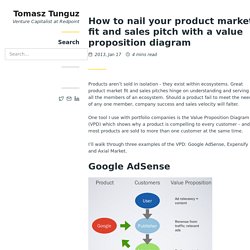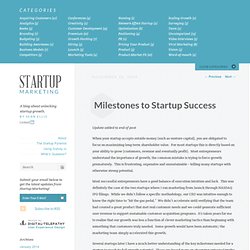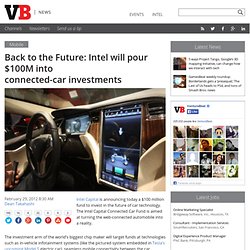

How to nail your product market fit and sales pitch with a value proposition diagram. Products aren’t sold in isolation - they exist within ecosystems.

Great product market fit and sales pitches hinge on understanding and serving all the members of an ecosystem. Should a product fail to meet the needs of any one member, company success and sales velocity will falter. One tool I use with portfolio companies is the Value Proposition Diagram (VPD) which shows why a product is compelling to every customer - and most products are sold to more than one customer at the same time. I’ll walk through three examples of the VPD: Google AdSense, Expensify and Axial Market. A VPD has three columns: the product, the customers and the value proposition for each customer. Google’s AdSense enables publishers to run ads on their websites to generate revenue.
The user is the most important. The advertiser follows the user in importance. That’s the genius of AdSense: ad relevancy aligns the incentives of everyone in the ecosystem. Expensify builds expense management systems for SMBs. Milestones to Startup Success. Update added to end of post When your startup accepts outside money (such as venture capital), you are obligated to focus on maximizing long-term shareholder value.

For most startups this is directly based on your ability to grow (customers, revenue and eventually profit). Most entrepreneurs understand the importance of growth; the common mistake is trying to force growth prematurely. This is frustrating, expensive and unsustainable – killing many startups with otherwise strong potential. Most successful entrepreneurs have a good balance of execution intuition and luck.
Parallel Universe.
Big. Academic. From the World’s Safest Battery to a Chance at a Second Date: 13 Teams Working Out of Harvard’s Innovation Lab. Back to the Future: Intel will pour $100M into connected-car investments. Intel Capital is announcing today a $100 million fund to invest in the future of car technology.

The Intel Capital Connected Car Fund is aimed at turning the web-connected automobile into a reality. The investment arm of the world’s biggest chip maker will target funds at technologies such as in-vehicle infotainment systems (like the pictured system embedded in Tesla’s upcoming Model S electric car), seamless mobile connectivity between the car electronics and your mobile devices, compelling applications and advanced driver assistance systems. The fund marks a turning point for the once-staid electronics of cars, which are now being reimagined in the digital era. Everything from Google’s self-driving cars to rear-view-mirror cameras (which could be mandated by 2014) show that the car electronics industry has never seen so much change.
By 2014, cars will be among the top three fastest-growing segments for connected devices and internet content, Intel said.